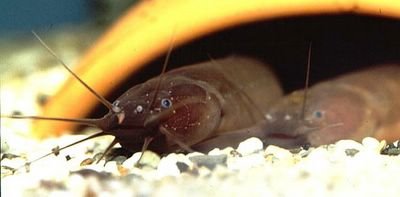
A close-up of two eel catfish heads from HERE. © S. Devaere
From BBC.com:
The eel catfish, Channallabes apus, is able to propel itself out of the water and bend its head downwards to capture insects in its jaws. The 30-40cm fish is found in the muddy swamps of the tropics of western Africa.
The Belgian researchers hope this discovery will help to explain how fish moved from sea to land millions of years ago.
The fish captures its prey by propelling itself onto the shore, raising the front part of its body and bending its head downwards over the insect. Usually, the fish uses suction to feed underwater; but because air is much less dense than water, the fish needs to employ a new strategy to catch its food.
"The way it positions its head prevents the prey from being pushed away," said Mr Van Wassenbergh. "This way it can place its jaws over the prey; and when it is strongly between the jaws, the fish will return to the water where it can further ingest the insect."
C. apus has a specially adapted spine which gives it extra flexibility, allowing it to tilt its head. The fish uses the rest of its long body to maintain stability while it is out of the water.
Watch the video HERE.